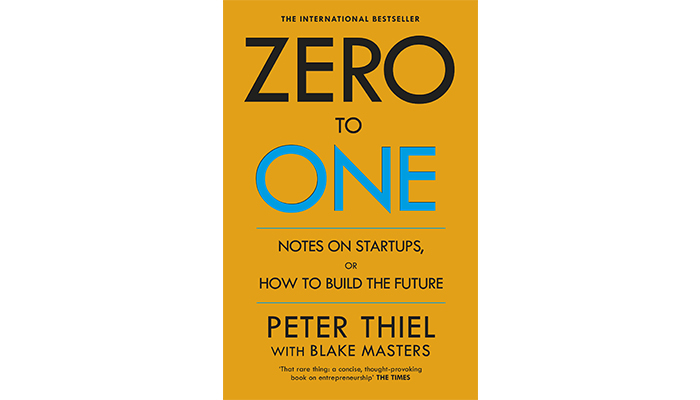
Book review: Zero to One
Author: Peter Thiel Category: Business & Entrepreneurship, Startups Publisher: Virgin Books Published on: 2014 Pages: 210 Language: EnglishAbout the Author:
Peter Thiel is the co-founder of PayPal. He is a venture capitalist and the first investor in Facebook, SpaceX, and LinkedIn. He produced Hollywood movies which are 1. Thank you for smoking 2. Squawk Box 3. CBS this morning.
The content in brief:
Zero to One, while reading the book, I have memorized my articles which are being written on Entrepreneurship and Startups. Peter wrote the ‘Zero to One’ in such a way that a known entrepreneur can refresh his/her journey and a budding entrepreneur can learn basics of startups. I would suggest every startup guy to read before venturing into. The book consists of fourteen topics, each topic curated with real numbers/statistics. I could sense while reading the book that he is the good evidence of dotcom mania. I love his intend to share his experiences, why the future should build in Stanford and Harvard universities? Why not any other place?.
What is ‘Zero to One’? The horizontal growth on a graph is easy to imagine and build, for example, creating another ecommerce site similar to the existing. However, vertical growth is harder to imagine and build just like building an iPhone, because it is an innovative idea and first of its kind. That means creating new things which is from zero to one is a vertical progress. This book mirrors originating companies and their progress in the dotcom era. The lessons learnt and spread across the globe today are from 90s in Silicon valley. for instance, 1. making incremental advances 2. Stay lean and flexible 3. Improve on the competition 4. Focus on product, not sales.
Few topics are interesting ” The ideology of competition” for instance, Google’s core business is search engine and online advertisements, however, Microsoft’s core business is operating system and office tools but why these two companies are attempting to compete each other? explained clearly. What is market capitalization and how it works? Valuation of the company is not based on today’s worth but based on the money flow for the next 3 to 5 years. Peter expressed that even monopoly of the business is not permanent which is true. And many interesting topics, I would suggest don’t miss the topic “The founder’s paradox” it has brief journey of few famous and successful entrepreneurs who have grown from nothing to anything.
Highlights from the book:
- There is no reason why the future should happen only at Stanford, or in a college, or in Silicon Valley.
- U.S. airline companies serve millions of passengers and create hundreds of billions of dollars of value each year. But in 2012, when the average airfare each was $178, the airlines made only 37 cents per passenger trip. Compare them to Google, which creates less value but captures far more. Google brought in $50 billion in 2012 (Verses $160 billion for the airlines), but it kept 21% of those revenues as profits.
- Compare the value of the New York Times company with Twitter. Each employs a few thousand people, and each gives millions of people a way to get news. But when Twitter went public in 2013, it was valued at $24 billion which is more then 12 times the Time’s market capitalization.
- Every monopoly is unique, but they usually share some combination of the following characteristics: Proprietary technology, network effects, economics of scale, and branding.
- Andreessen Horowitz invested $250,000 in Instagram in 2010. When Facebook bought Instagram just two years later for $1 billion, Andreessen netted #78 million which is a 312x return in less than two years.
Enjoy reading,
Yours,
Narasimha Mohan.
Another good read
Back

